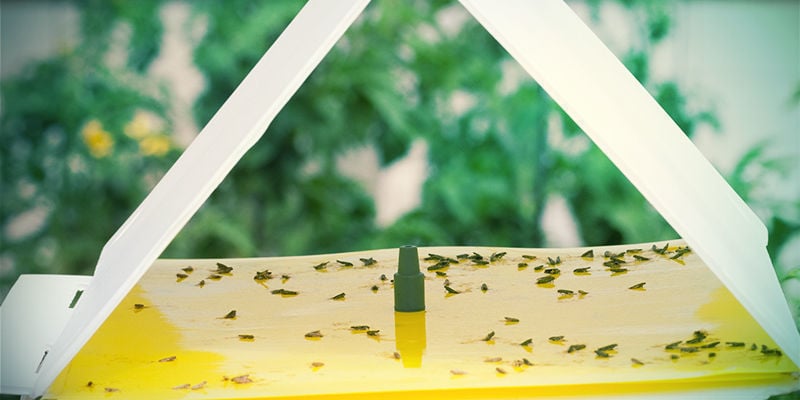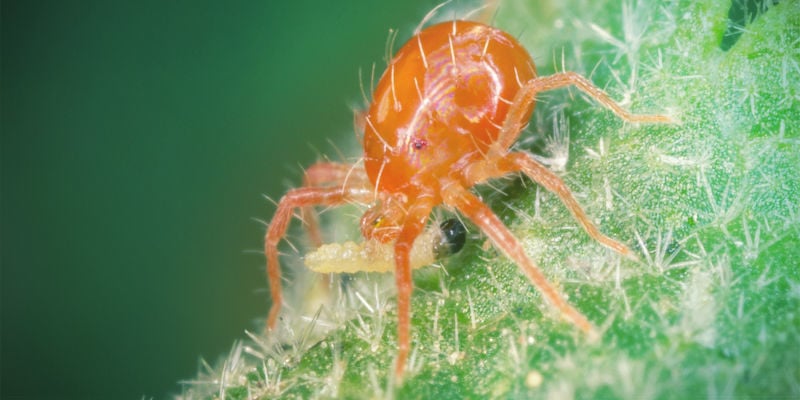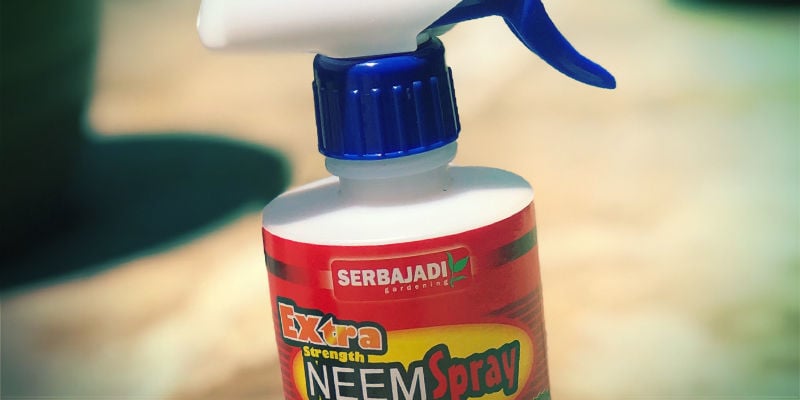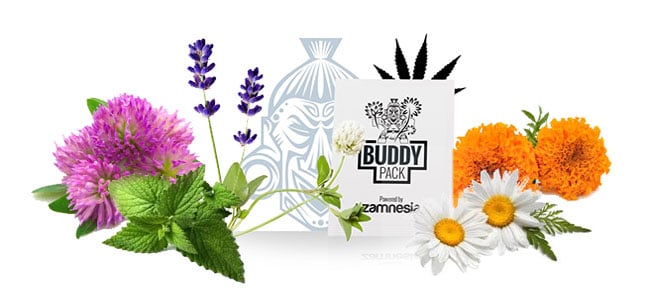Top 5 Natural Pest Repellents For Cannabis
Make sure your organic marijuana beauties stay that way. These top 5 organic pest control methods will ensure your weed remains natural and untouched by nasty chemicals.
The demand for organic, all-natural cannabis is on the rise all over the globe. The need to meet organic standards means organic pest control is necessary. The first organic pest control is healthy cannabis plants. Cannabis is naturally insecticidal. Good soil, watering practices, and plant maintenance go a long way in preventing being overtaken by a host of bad bugs.
If the balance is thrown off or pests are brought into the garden, organic applications are the preferred solution to the problem. These top 5 natural pest repellents will meet the demands of the most fussy organic cannabis connoisseur.
#1 NEEM OIL
When used as a foliar spray, neem oil can kill adult web-spinning spider mites and prevent already laid eggs from developing into mites. It kills, then prevents further whitefly infestation. Fungus gnats can be controlled above and below the soil when neem is used as a root wash. It will also dispose of the nasty rot-causing nematodes and leave the good guys alone. It speeds up the decomposition of decaying matter for quicker bioavailability of organic nutrients to the plant.
Unlike chemical sprays that kill everything good or bad, ladybugs and butterflies, earthworms and bees remain unharmed by neem. It acts as a mild growth stimulant when watered in for other problems. When regularly applied as a prophylactic to cannabis plants from a young age, most pathogens, moulds, and insects that are fond of cannabis can be prevented entirely, indoors or out.
#2 HOMEMADE FOLIAR SPRAYS

Foliar sprays are specifically made for controlling and eliminating unwanted pests. There are a number of favourites that provide protection and act directly as an insecticide. Some organic horticulture choices are:
Attention. Only use these sprays during the vegetation phase. When used during flowering, they can affect trichome production and final harvest bouquets.
-
TOMATO LEAF SPRAY (AND TOBACCO LEAF SPRAY)
The nightshade family of plants, which includes tomatoes, tobacco, and potatoes, contains water-soluble toxic alkaloids. When the leaves are crushed and left to soak in water, then removed, a powerful organic insecticide is the result—killing aphids and attracting parasitic wasps to the garden. Simply soak 1 or 2 cups of mashed tomato leaves (or tobacco leaves) in water overnight. Strain well, add 2 more cups of fresh water, then spray plants liberally.
-
GARLIC OIL SPRAY
Garlic oil is a powerful topical spray that directly controls aphids, earwigs, cabbage loopers, leafhoppers, June bugs, squash bugs, and whiteflies. It will not harm ladybugs, but may harm other beneficial insects. Use sparingly and directed at affected areas, rather than as a whole plant tonic. To make a long-lasting cordial that will allow for a number of applications, soak 75g of crushed garlic cloves in 2 teaspoons of unfragranced mineral oil for at least 24 hours. Remove the garlic matter and slowly add 15ml of liquid kitchen soap or insecticidal soap. Mix at a rate of 20ml to a litre of fresh water. Reduce mixing rate to the minimum that is observed to work.
-
ESSENTIAL OIL SPRAY
Essential oils are the concentrated terpenes distilled from any number of plants. For this spray, known insect deterrents will be used. A mixture of marigold, peppermint, eucalyptus, and rosemary oils make for an effective all-round pest control spray. Mix equal amounts of each oil. Mix bottle for bottle and have enough for years, or match teaspoon for teaspoon. Shake well. Add a teaspoon of this heady mix to a litre of warm water that contains half a teaspoon of dish soap as an emulsifier. It will be effective against aphids, whiteflies, spider mites, ants, nematodes, and flea beetles.
-
CORIANDER TEA SPRAY
Coriander spray will take care of any aphid or spider mite infestations. It addresses the infestation directly and also affects the viability of the next generation already in eggs. Simply boil 250g of shredded coriander leaves in a litre of water. Strain and set to cool. In a separate container, mix ½ teaspoon of dish soap with another litre of water. Combine the two and spray directly on infestations.
-
SALT SPRAY
Counter-intuitively, salt spray doesn’t harm cannabis, but kicks spider mites to the curb. Not the average iodised or plain table sea salt. Himalayan rock salt in particular does not absorb environmental impurities and can be used in mild dilutions for pest control. 2 tablespoons of mineral rock salt dissolved in 4 litres of clean water and sprayed immediately will solve spider mite problems.
-
HOT PEPPER SPRAY
The pepper family contains capsaicin, which is a well-respected insecticide. Black pepper, ginger, chillies, dill, and paprika are all effective. The stronger the pepper, the stronger the spray. Personal safety needs to be considered here as really hot peppers can irritate the skin, and blowback can hurt your eyes, lips, and nose. To make a pepper spray, blend 2 large cayenne or habanero peppers in enough water to make the mix move well. Strain out the seeds and solid matter. Wear gloves as it can irritate your skin. Add 75ml of concentrate to 4 litres of water with a little castile soap, and spray generously all around the garden.
#3 COMPANION PLANTING
Companion planting benefits cannabis in a number of ways. Comprehensive pest control goes hand in hand with soil moisture penetration, root and soil health, and fungus/pathogen control. For pest control, there are plants that act as repellents themselves, for example:
-
Marigolds release a chemical into the soil that destroys bad nematodes and repels root aphids.
-
Basil releases a natural insecticide, but it’s from the foliage rather than roots. It repels a number of insects, snails, and slugs.
-
Foxglove attracts a predatory insect that eats spider mites, aphids, and whiteflies.
-
Garlic is an all-round repellant that has a repelling effect on small mammals also.
-
Dill and its seasonal flowers attract a predatory wasp that eats aphids, spider mites, and the dreaded caterpillar.
-
Cilantro repels spider mites and aphids.
-
Chrysanthemums naturally produce pyrethrum, which is a general insecticide and deterrent.
Then, there are others that attract friendly bugs that predate on cannabis-unfriendly ones.
-
Sunflowers are beacons to weed-friendly insects. They attract predatory mites, ladybugs, and other bugs that eat spider mites, scale, and aphids.
-
Yarrow attracts predatory wasps and ladybugs.
The added benefit of companion planting is that there will always be a fresh garden salad at hand. Your plants will also be well-camouflaged and wind protected, while several flowering species will add a splash of happy colour to your whole garden.
#4 PHEROMONE TRAPS

Like most creatures, one of the basic drives of life for insects is mating. Pheromone traps exploit this fundamental function by giving off pheromones alluring to cannabis-damaging insects. Insects are drawn to the trap and then detained by sticky pads. Traps don’t exterminate a population of bugs as would a spray; they control the pest population and prevent swarming and damaging numbers.
#5 INTRODUCING PREDATORS

There are a number of mites and bugs that live off the insects and other mites that can infest cannabis. Introducing predators can be done gradually over the life of the plant, or right at the beginning of vegetation so as to develop a healthy population. Some of the predators available on the market include A. fallacis, P. persimilis, or S. punctillum for the control of spider mites.
-
A. cucumeris is a predatory mite beneficial to the whole garden, but is particularly hungry for thrips and their larvae.
-
The soil-dwelling S. scimitus will bring fungus gnats, spider mites during diapause, and thrips under control.
-
E. formosa, which is a parasitic wasp, will control whiteflies, as will the voracious beetle D. catalinae.
-
 6 min
5 March 2020
How To Grow Organic Cannabis At Home
If you want to enjoy highest quality cannabis, then it‘s going to be organic herb. But growing cannabis organically can be a challenge. We explored organic farming techniques and put together a...
6 min
5 March 2020
How To Grow Organic Cannabis At Home
If you want to enjoy highest quality cannabis, then it‘s going to be organic herb. But growing cannabis organically can be a challenge. We explored organic farming techniques and put together a...
-
 6 min
5 September 2018
What Is Recycled Organic Living Soil (ROLS)
ROLS techniques allow you to create a self-sustaining soil biosphere in your garden. Save money on pesticides and fertilisers, improve the health of the environment, and enhance the quality of your...
6 min
5 September 2018
What Is Recycled Organic Living Soil (ROLS)
ROLS techniques allow you to create a self-sustaining soil biosphere in your garden. Save money on pesticides and fertilisers, improve the health of the environment, and enhance the quality of your...
-
 3 min
5 August 2018
Using Coconut Water As Organic Cannabis Fertiliser
Coconut water is an all-natural cannabis growth accelerator for organic and hydroponic growing systems. It boosts clone development, enhances root growth from seeds, and boosts overall plant...
3 min
5 August 2018
Using Coconut Water As Organic Cannabis Fertiliser
Coconut water is an all-natural cannabis growth accelerator for organic and hydroponic growing systems. It boosts clone development, enhances root growth from seeds, and boosts overall plant...













 United States
United States














